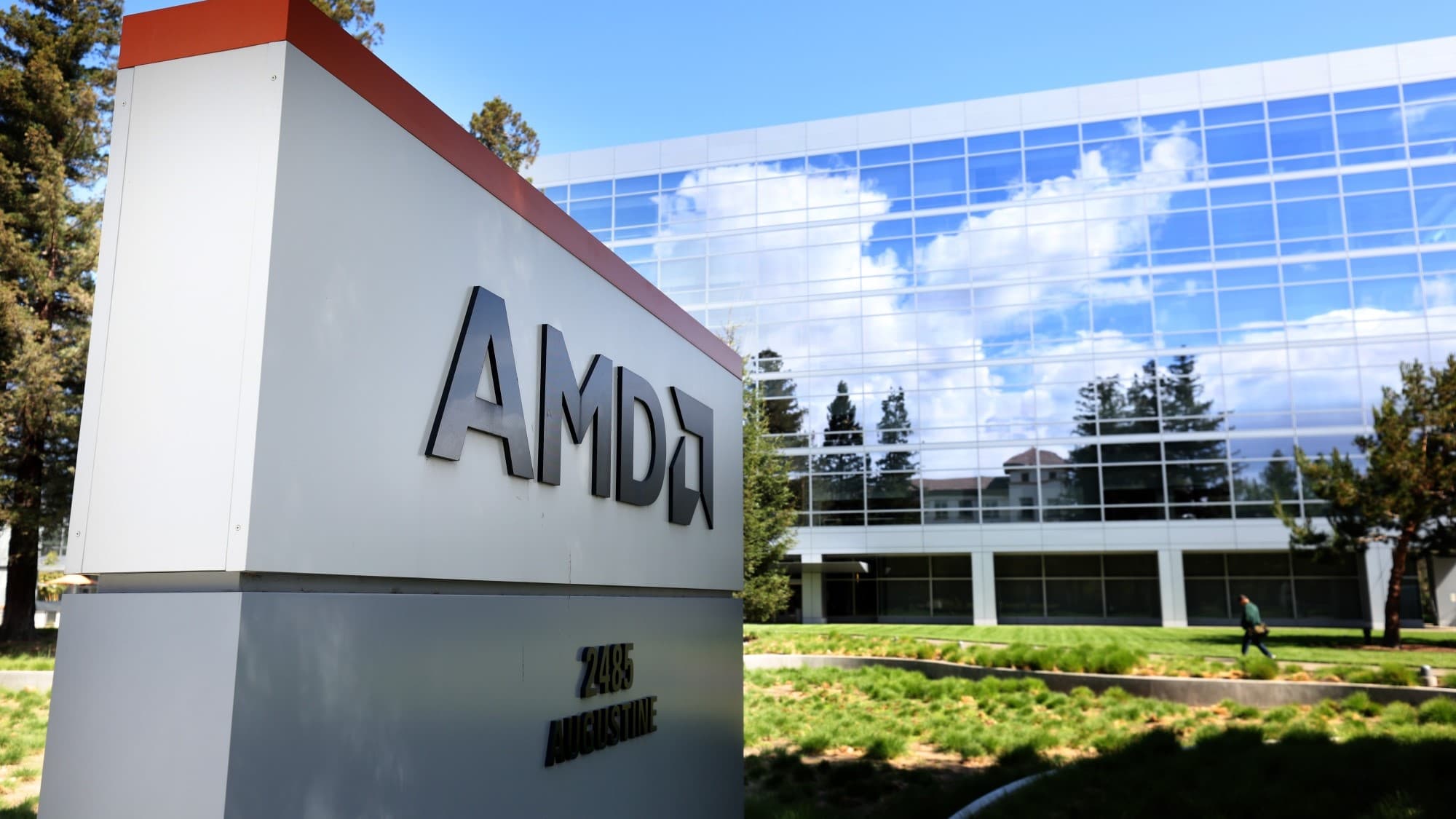From its inception in 1969 to leading the semiconductor industry, Advanced Micro Devices – AMD‘s journey is marked by innovation and tenacity. With this company report, you can explore the history of AMD, a company that began with a team of Fairchild Semiconductor veterans and rose to challenge industry giants. You can also discover the milestones like the groundbreaking 1-GHz Athlon processor and strategic acquisitions that have shaped its path, and witness how AMD’s strategic moves and product launches have solidified its position as a major player in the competitive landscape of technology.
Year by Year History of AMD

American, multinational semiconductor company Advanced Micro Devices, Inc, located in Sunnyvale, California, United States. The company was founded in 1 May 1969 by Jerry Sanders, a former executive at Fairchild Semiconductor Corporation, and Jack Gifford, Edwin Turney, Larry Stenger, John Carey, Frank Botte, Sven Simonsen, Jim Giles. They started supplying Microchips designed by Fairchild and National Semiconductor, and initially focused on producing logic chips. They are known for developing computer processors and technologies within that field for business and consumer markets.
The company released its first product in 1970 and the company began producing computer chips in mid 70s.
Intel and AMD enter a 10-year technology exchange agreement, initially signed in October 1981 and formally executed in February 1982. Advanced Micro Devices became second-source chips supplier for the Intel Corporation, which made the microprocessor used in IBM personal computers between 1982 and 1986.
In 1991, AMD released the Am386 microprocessor family, a reverse-engineered chip that was compatible with Intel’s next-generation 32-bit 386 microprocessor. With the creation of Am386 an AMD-designed chips, they began to compete directly with Intel.
In 1996, AMD acquired NexGen a microprocessor company and began branching out from the Intel-compatible chip market.
In 2000, AMD introduced the Athlon processor, which was designed to run the Microsoft Windows operating system. The company became the first company to produce a 1-GHz (gigahertz) microprocessor with the release of the Athlon processor, which marked the company as a serious competitor in the chip market.
In 2006, AMD acquired the graphics processor company ATI Technologies, a manufacturer of video graphics cards for use in PCs.
In 2008, Announcement of spin off manufacturing operations, in order to form a multibillion- dollar joint venture with Advanced Technology Investment Co. and the Mubadala Development Company, both based in Abu Dhabi.
In 2014, Advanced Micro Devices was recognized into two business groups: Computing and Graphics, primarily includes desktop and notebook processors and chipsets, discrete GPUs, and professional graphics; and Enterprise, Embedded and Semi-Custom, primarily includes server and embedded processors, dense servers, semi-custom SoC products (including solutions for gaming consoles), engineering services, and royalties.
AMD (Advanced Micro Devices) is now producing a wide range of computing products, including CPUs (Central Processing Units) for computers and servers, GPUs (Graphics Processing Units) for both consumer and professional markets, and semi-custom chips that power gaming consoles like the PlayStation and Xbox. They also develop embedded processors and provide related technologies for data centers and networking equipment.
AMD’s Total Assets
- AMD’s total assets for 2019 were $6.028B, a 32.31% increase from 2018.
- AMD’s total assets for 2018 were $4.556B, a 28.27% increase from 2017.
- AMD’s total assets for 2017 were $3.552B, a 6.96% increase from 2016.

Subsidiaries of Advanced Micro Devices – AMD
Advanced Micro Devices, Inc. List of subsidiaries:
Domestic Subsidiaries:
- Advanced Micro Ltd. – California
- AMD Corporation – California
- AMD Malaysia LLC – Delaware
- AMD (EMEA) LTD. – Delaware
- AMD Far East Ltd. – Delaware
- AMD International Sales & Service, Ltd. – Delaware
- AMD Latin America Ltd. – Delaware
Foreign Subsidiaries:
- AMD Technologies SRL – Barbados
- ATI International SRL – Barbados
- ATI Technologies (Bermuda) Limited – Bermuda
- Advanced Micro Devices Belgium N.V. – Belgium
- AMD South America LTDA – Brazil
- Alberta ULC – Canada
- ATI Technologies ULC – Canada
- Advanced Micro Devices (China) Co. Ltd. – China
- AMD Technologies (China) Co. Ltd. – China
- Advanced Micro Devices (Shanghai) Co. Ltd. – China
- AMD Products (China) Co., Ltd – China
- AMD Technology Development (Beijing) Co. – China
- AMD Technologies Development (Suzhou) Co., Ltd. – China
- ATI Visual Technologies (Shanghai) Co. Ltd. – China
- DDEEG Microconsulting Oy – Finland
- Advanced Micro Devices S.A.S. – France
- Advanced Micro Devices GmbH – Germany
- AMD India Private Limited – India
- AMD Research & Development Center India Private Limited – India
- Graphic Remedy, Ltd. – Israel
- Advanced Micro Devices S.p.A. – Italy
- AMD Japan Ltd. – Japan
- Advanced Micro Devices Sdn. Bhd. – Malaysia
- Advanced Micro Devices Export Sdn. Bhd. – Malaysia
- Advanced Micro Devices Global Services (M) Sdn. Bhd. – Malaysia
- ATI Technologies (L) Inc. – Malaysia
- Advanced Micro Devices Malaysia Ltd. – Malaysia
- Advanced Micro Devices (Singapore) Pte. Ltd. – Singapore
- AMD Technologies Singapore Pte. Ltd. – Singapore
- Advanced Micro Devices, AB – Sweden
- Advanced Micro Devices (U.K.) Limited – United Kingdom
AMD’s Success and Failures

Advanced Micro Devices has signed a huge success with the creation of first 1 GHz microprocessor known as Athlon Processor in 2000. After this move, the company become a remarkable brand in chip market.
Also, the production of Am386 microprocessor with reverse engineering in 1991, is a turning point for the company’s history. Thus, AMD became a only competitors to Intel Corporation.
Although AMD try harder to compete with Intel, they failed some points. For instance, they could not convince PC industry that AMD is better than Intel. Also, they failed with branding issues. For example, Intel naming schemes aren’t exactly consumer-friendly either, but they make a certain degree of sense, while the company traded names that people knew for ones that felt arbitrary by contrast.
Company Structure of The Company
In 2008 Advance Micro Devices announced plans to split the company in two—with one part designing microprocessors and the other manufacturing them.
Major Competitors of Advanced Micro Devices – AMD
Intel is Advanced Micro Devices‘ number one competitor. Intel is a Public company that was founded in 1968 in Santa Clara, California. Intel is in the Computers, Peripherals, Networking and Electronic Equipment industry. Compared to Advanced Micro Devices, Intel has 100.700 more employees.
NVIDIA is seen as one of Advanced Micro Devices’ biggest rivals. NVIDIA was founded in Santa Clara, California in 1993. NVIDIA is in the Semiconductors & Semiconductor Equipment field. Compared to Advanced Micro Devices, NVIDIA generates $4.2B more revenue.
Qualcomm is another Advanced Micro Devices’ top competitors. Qualcomm is headquartered in San Diego, California, and was founded in 1985. Qualcomm competes in the Telecommunication Services industry. Qualcomm generates 364% the revenue of Advanced Micro Devices.
Balance Sheet of Advanced Micro Devices – AMD

Advanced Micro Devices has demonstrated a robust financial position with total assets reported at $67.580 million, a significant increase from the previous year. The company’s current assets stand at $15.019 million, supported by a strong cash on hand of $5.855 million and receivables at $4.128 million. Long-term assets are bolstered by substantial goodwill and intangible assets, accounting for $48.295 million of the portfolio.
Liabilities have been managed prudently with total current liabilities at $6.369 million. The long-term debt remains modest at $2.467 million, contributing to a total long-term liabilities figure of $6.461 million.
Shareholder equity has seen an exceptional increase to $54.750 million, indicating robust investor confidence and a solid foundation for future growth. This equity, coupled with our total liabilities, reconciles with the total assets, affirming the company’s strong financial health.
In summary, the company maintains a strong balance sheet, poised for sustainable growth and continued investment in innovation.
References
- https://www.macrotrends.net/stocks/charts/AMD/amd/balance-sheet
- https://www.macrotrends.net/stocks/charts/AMD/amd/total-assets
- https://www.theverge.com/2012/11/15/3646698/what-happened-to-amd
- https://www.sec.gov/Archives/edgar/data/2488/000119312511040392/dex21.htm
- https://www.reuters.com/companies/AMD.O/financials/balance-sheet-annual
- https://www.britannica.com/topic/Advanced-Micro-Devices-Inc
- https://www.owler.com/company/amd#overview



